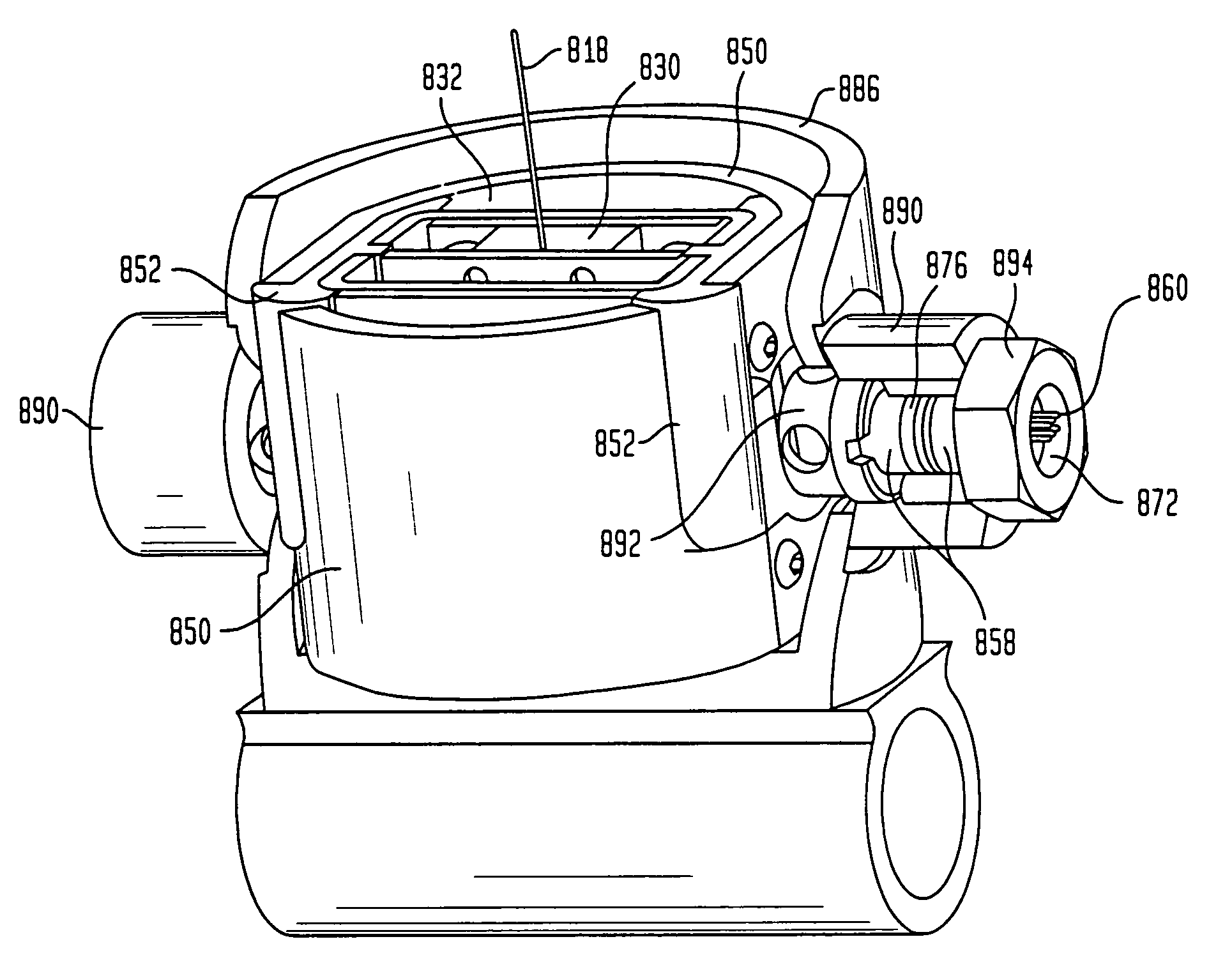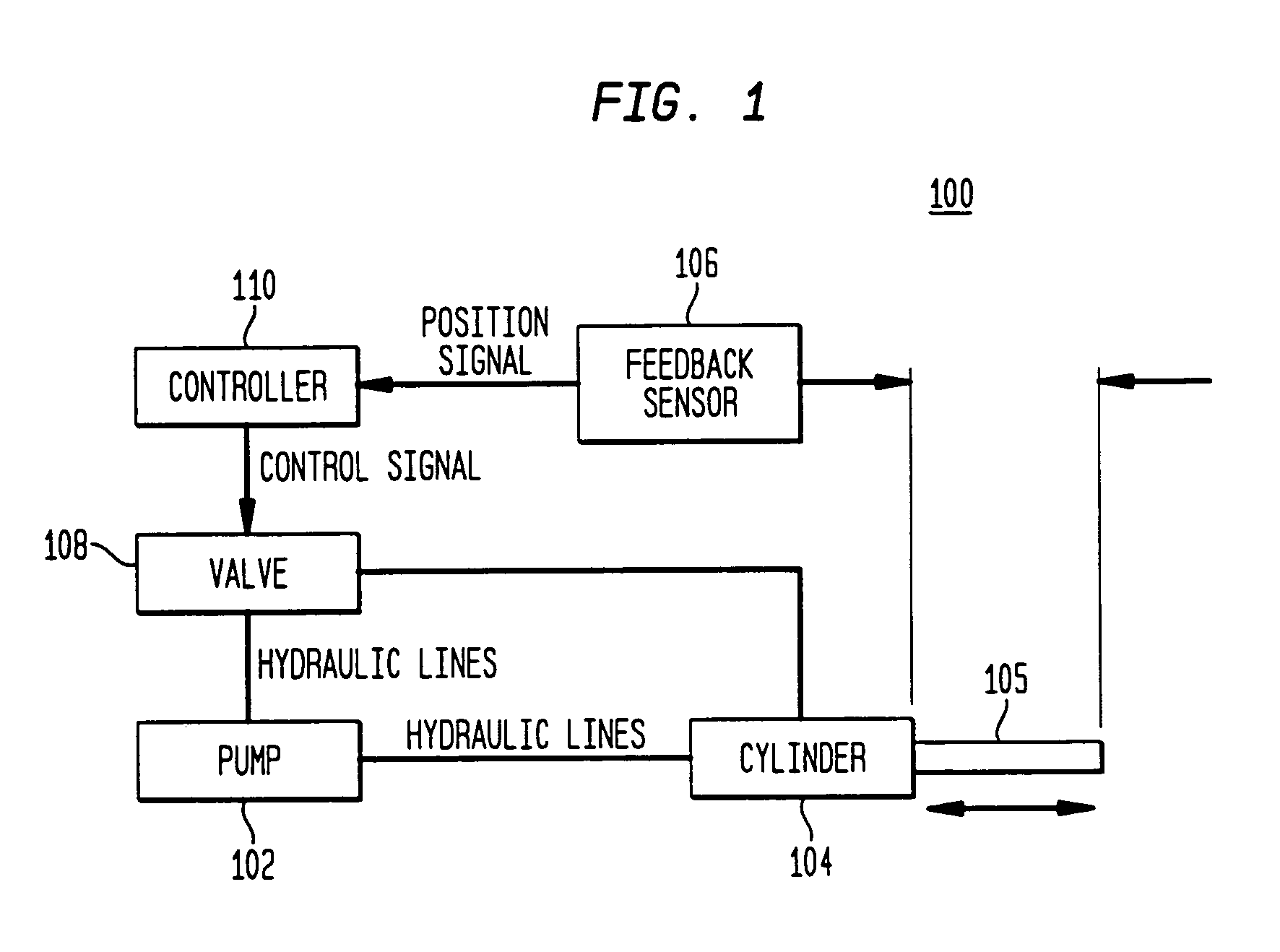Precision sensor for a hydraulic cylinder
a technology of precision sensor and hydraulic cylinder, which is applied in the field of position sensor, can solve the problems of requiring great skill, improper operation equipment poses a safety hazard, and operators have been known to damage overhead utility wires, underground wiring, underground gas lines, etc., and achieves the effect of reducing construction costs, convenient formation, and convenient operation
- Summary
- Abstract
- Description
- Claims
- Application Information
AI Technical Summary
Benefits of technology
Problems solved by technology
Method used
Image
Examples
Embodiment Construction
[0033]A feedback sensor for a cylinder according to the principles of the invention provides a precision signal indicative of a piston position with relation to a cylinder. The sensor is durable, maintains a long life and is configured for use in harsh environments. An exemplary sensor mounts inside a hydraulic cylinder, thereby protecting the sensor, and uses a non-contacting transducer to provide the precision signal. A converting element converts the motion of the piston to a proportional motion of a translating member. The transducer, which can be located remotely from the piston, senses the position of the translating member, and provides an electrical output signal indicating the piston's position. This signal can be conditioned and used in a feedback control system, a user interface or any system where such a signal is desirable.
[0034]In FIG. 1, a block diagram of an exemplary feedback control system 100 is shown. The control system 100 comprises a hydraulic cylinder 104 actu...
PUM
 Login to View More
Login to View More Abstract
Description
Claims
Application Information
 Login to View More
Login to View More - R&D
- Intellectual Property
- Life Sciences
- Materials
- Tech Scout
- Unparalleled Data Quality
- Higher Quality Content
- 60% Fewer Hallucinations
Browse by: Latest US Patents, China's latest patents, Technical Efficacy Thesaurus, Application Domain, Technology Topic, Popular Technical Reports.
© 2025 PatSnap. All rights reserved.Legal|Privacy policy|Modern Slavery Act Transparency Statement|Sitemap|About US| Contact US: help@patsnap.com



